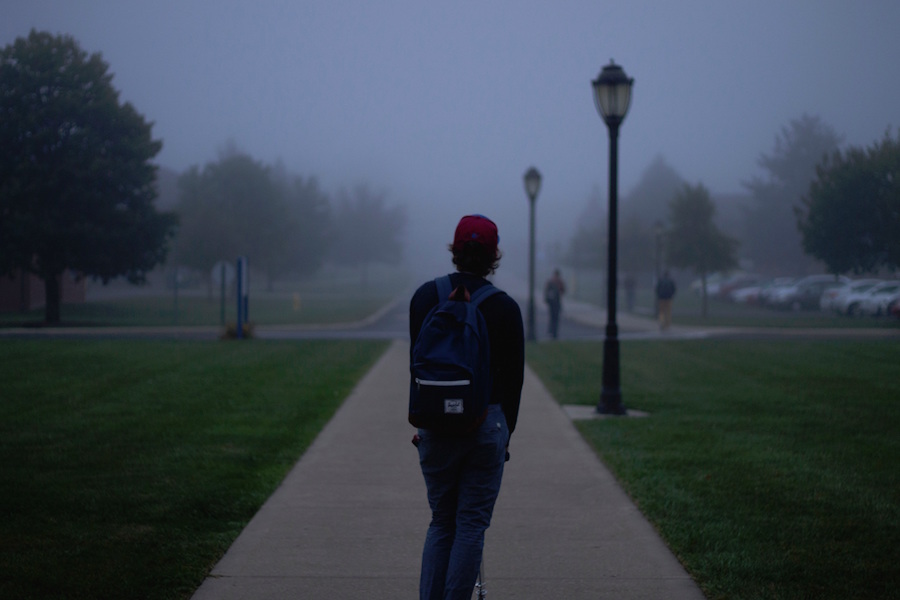
Sarah K. Stephens
Contributor
When I walk across the campus of Penn State, I encounter a variety of permanent gifts from previous senior classes. Lampposts, emblems, clocks, and parks are all adorned at University Park with placards reading something akin to “Gift of the Class of. . .”
But recently, there’s been a trend for the senior Penn State class to provide a gift that supports the campus community rather than a physical memorial. The class of 2017 will provide funding for Lion Pantry, which operates as a food bank for university students in need. The class of 2016 created an endowment to support CAPS, the Penn State Center for Counseling and Psychological Services, which provides mental health care for university students.
While I think this shift towards a charitable gift for the senior class is certainly impressive and reflects many of the positive traits of the Millennial generation that are too often overlooked (e.g., increased interest in community service and charitable works), I am also left wondering:
Why do students need to provide funding for counseling services they’ve already paid for, in part, through their tuition?
Or alternately:
Why is Penn State incapable of funding its counseling services themselves?

Photograph via Dayne Topkin
Of course, it’s important to note that Penn State is not unique in its inadequacy to meet the mental health needs of its students. The Center for Collegiate Mental Health (CCMH) provided a recent report based on data from 140 higher education institutions for the 2013-2014 school year, followed-up by a report for the 2014-2015 school year with a comparable number of institutions surveyed. The main message from both reports is simple:
The need for mental health services on campus is increasing significantly. The funding for services is not.
As the 2014-2015 report states very clearly: “the number of students treated by counseling centers grew at more than 5x the rate of institutional enrollment and the number of attended appointments grew at more than 7x the pace of institutional enrollment.” (p. 7)
Penn State made a positive move forward in 2014, allocating $300,000 additional funds to CAPS and committing to new staff hires for their counseling services (so far, 5 new staff members have been added). Even with this injection of funding, though, CAPS remains underfunded and mental health needs remain unmet for many students.
For example, for this Fall 2016 semester I have encountered the following situations with my students (I am currently teaching approximately 400 students this semester in my 3 courses; Penn State has an enrollment of ~46,000 undergraduate students at my campus):
- 5 students unable to complete their coursework due to untreated depression or lapses in their depression treatment since coming to campus
- 2 students who have been sexually assaulted and are seeking out therapeutic services to cope with their trauma
- 7 students who have lost close family members
- 1 student death related to an undetected medical condition
- 8 students who requested alternatives to an in-class assignment due to severe social anxiety
Photograph via Alex Jones

And these student struggles only represent my current cohort of students. If I stretched my own data back across the 10 years I’ve taught at Penn State, the numbers would probably surprise someone not currently working with the undergraduate student population. Naturally, if we extrapolated to the entire undergraduate population on campus (assuming my sample is generalizable which, since two of my courses are general education courses, it could reasonably be assumed it is), the numbers would be even more staggering.
Which leads me back to my initial question:
Why must our undergraduate students rely on the generosity of a senior class to obtain better funding for their mental health needs?
Penn State’s football coach, James Franklin, earns a report $4,500,000 a year (yes, that’s 4 and a half million) and there is reportedly another $4,000,000 split between Franklin’s 9 assistants. President Eric Barron was recently approved for a pay increase, from $800,000 to 818,000. Other increases in salaries have also been approved within the last academic year for:
- Steve Dunham, chief general counsel, annual salary of $551,364;
- Nicholas Jones, executive vice president and provost, annual salary of $511,364;
- Rodney Kirsch, senior vice president for Development and Alumni Relations, annual salary of $481,320;
- David Gray, senior vice president for Finance and Business, annual salary of $470,568;
- Sandy Barbour, Penn State Athletic Director, annual salary of $720,996.
Couldn’t there be some room in the fiscal planning of Penn State to better accommodate the mental health needs of our students?
Our country is well aware of the consequences of untreated mental illness, especially on college campuses. From Virginia Tech to Oregon, to Penn State itself, we regularly witness the effects of inadequate mental health care on the community. More privately, we also witness the effects of untreated mental illness on those we love.
I believe Penn State, and higher education institutions across our country, do care about their students and want the best for them. But, as the old adage says: Actions speak louder than words.
What good is a new stadium without a healthy student body to fill it?
More About Sarah K. Stephens: Sarah K. Stephens earned her Doctorate in Developmental Psychology and teaches a variety of human development courses as a lecturer at Penn State University. Although Fall and Spring find her in the classroom, she remains a writer year-round. Her short stories have appeared in Five on the Fifth, The Voices Project, The Indianola Review, and the Manawaker Studio’s Flash Fiction Podcast. Her debut novel, A Flash of Red, will be released in Winter 2016 by Pandamoon Publishing. Follow her on Twitter or Facebook and read more of her writing on her blog.






